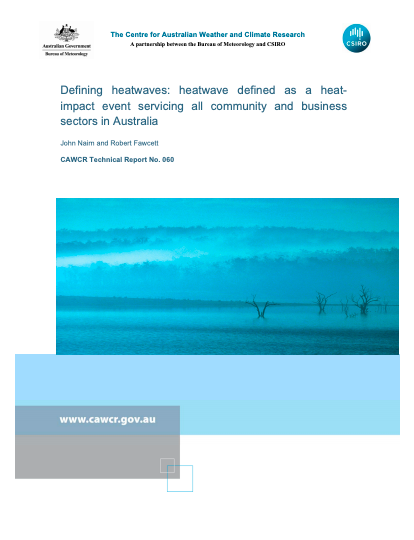Defining heatwaves: heatwave defined as a heat impact event servicing all community and business sectors in Australia

This report proposes a new objective definition for heatwaves and heatwave severity that may be applied to any location in Australia, or for that matter the world. Using this definition, it is now possible to compare severe and extreme heat events across time and space. A heatwave intensity index has been created by combining measures of excess heat, the long-term temperature anomaly characterised by each location’s unique climatology of heat, and heat stress, the short-term temperature anomaly measuring recent thermal acclimatisation. These two measures have been factored together to create the excess heat factor (EHF).
The Australian community understands that heatwaves are a common summertime experience and rarely anticipates significant human health risk. This is borne out by the cumulative distribution function of EHF which indicates that most heatwaves are of low intensity. It is only rarely that heatwaves become severe enough to impact vulnerable people and rarer still that they exhibit extreme intensities capable of causing widespread health problems. Generalised extreme value theory has been used to motivate a severity threshold for the EHF, a level at which the heatwave may be considered to be severe. Case studies of Australian and international severe and extreme heatwaves are examined with the aid of EHF intensity, demonstrating the utility of the index. The methodology applied in the development of this heatwave index appeals to our common understanding of heatwave impact. Additionally, the objective statistical techniques employed here are easily extended to permit the development of a robust coldwave index, the logical extension to coldwaves being also proposed in this report. EHF can be used to appropriately alert communities according to the intensity of impending heatwaves, whilst climates trends and projections of intensity, frequency, spatial extent and length can also be considered for Australian and international locations.